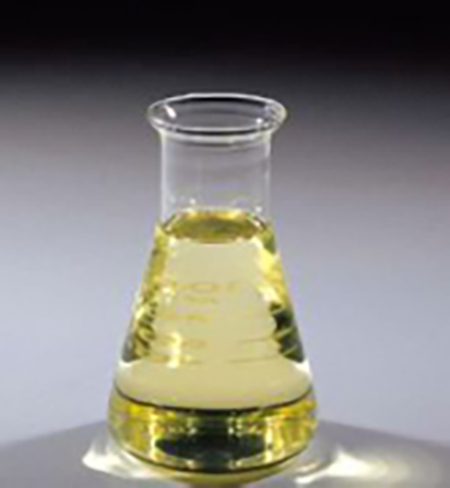Correct use of 3-bromopropyne
Introduction
3-Bromopropyne is an organic compound with a molecular formula of C3H3Br[1], a molecular weight of 118.96 and a melting point of -61.1 °C. 3-Bromopropyne is a colorless liquid under standard conditions, soluble in ethanol, ether, benzene and chloroform. For soil pesticides, chemical intermediates.

Picture 1 3-Bromopropyne liquid
Preparation
Its preparation method is to add hydrogen bromide and solvent into the reaction flask, in the presence of CuBr and Cu catalyst, add propargyl alcohol dropwise with stirring, after the drop is completed, the temperature is slightly raised to react, and then post-processing, rectification to obtain bromopropane. alkyne. Reaction equation: CH≡C-CH2OH+HBr→CH≡C-CH2Br+H2O or the product can also be obtained by reacting propargyl alcohol with (PhO)3PBr2 in the presence of pyridine.
It is derived from the reaction of propargyl alcohol with phosphorus bromide. The propargyl alcohol was added to pyridine under cooling, and phosphorus tribromide was slowly added dropwise with stirring at -5°C, and the reaction temperature was maintained below 0°C. After the addition was completed, stirring was continued for 15 min. Then, vacuum distillation is performed to collect all the distillate, and fractional distillation is carried out again under normal pressure to obtain the finished product. Or add a small amount of pyridine to dry propargyl alcohol, add phosphorus tribromide and a small amount of pyridine solution dropwise at 0 °C under stirring, stir for 20 min after dropping, and distill under reduced pressure to obtain the product. Reaction equation: CH≡C-CH2OH+PBr3→CH≡C-CH2Br
Storage method
Store in a cool, ventilated warehouse. Keep away from fire and heat sources. The storage temperature should not exceed 30℃. It should be stored separately from oxidants and alkalis, and should not be mixed. Use explosion-proof lighting and ventilation facilities. Prohibit the use of mechanical equipment and tools that are prone to sparks. Storage areas should be equipped with emergency release equipment and suitable containment materials. Glass bottle outer wooden box or calcium plastic box to reinforce the inner liner. Store in a cool, dry and ventilated warehouse. Keep away from heat, fire and direct sunlight. Store and transport separately from oxidants and other contradictory items.
Leak handling
Cut off the source of ignition. Emergency personnel wear self-contained breathing apparatus and general fire protection clothing. Do not come into direct contact with the leak, and stop the leak when it is safe to do so. Water mist can reduce evaporation but do not allow water to enter the storage container. Mix and absorb with sand or other non-combustible adsorbents, then collect in an airtight container and mark it for disposal. If there is a large amount of leakage, use the embankment to contain it, and then collect, transfer, recycle or waste it after harmless treatment.
Protective measures
Respiratory protection: When the concentration in the air is high, a gas mask should be worn. It is recommended to wear self-contained breathing apparatus during emergency rescue or evacuation.
Eye Protection: Wear chemical safety goggles.
Body Protection: Wear anti-static overalls.
Hand Protection: Wear chemical resistant gloves when necessary.
Others: Smoking, eating and drinking are prohibited at the workplace. After work, shower and change.
First-aid
Skin Contact: Remove contaminated clothing and rinse immediately with plenty of running water for at least 15 minutes. seek medical attention.
Eye Contact: Immediately open the upper and lower eyelids, rinse thoroughly with running water or normal saline for at least 15 minutes. seek medical attention.
Inhalation: Quickly leave the scene to fresh air. Keep the airway open. If breathing is difficult, give oxygen. If breathing stops, give artificial respiration immediately. seek medical attention.
Ingestion: If swallowed by mistake, rinse mouth with water and drink milk or egg white. seek medical attention.
Extinguishing methods: foam, carbon dioxide, dry powder, sand.
Reference
1 Chen Minwei, Gan Liyu. Organic heterocyclic compounds. Beijing: Higher Education Press, June 1990: 20
Related articles And Qustion
See also
Lastest Price from Propargyl bromide manufacturers

US $10.00/KG2025-04-21
- CAS:
- 106-96-7
- Min. Order:
- 1KG
- Purity:
- 99%
- Supply Ability:
- 100 mt

US $9.10/KG2024-10-11
- CAS:
- 106-96-7
- Min. Order:
- 1KG
- Purity:
- 99%
- Supply Ability:
- 10 ton



